Americans have developed an affinity for outdoor dining
Another Grim Milestone on the Road to Recovery
While the United States seems to be rounding the corner on COVID-19, the country has paid a heavy toll. This past week the total number of American deaths attributable to the virus surpassed 600,000. The economic impact, although less than anticipated, has been profound. The disruption of life has been staggering.
Thankfully, America is recovering. The virus is largely contained here. Life is returning to something resembling normal. The economy has bounced back, and Americans are returning to work. Children are back in school.
The big news for investors last week was that the Federal Reserve indicated that it would likely raise interest rates sooner than originally forecast. It now appears that the Fed will raise its benchmark rate from near zero to 0.6% by late 2023. The central bank also indicated that it would curtail its bond-buying program, although the timing was not announced.
The Markets
This past Friday, the Dow Jones Industrial Average fell by 534 points, or 1.58%. The S&P 500 index decreased 55 points, or 1.31%. The Nasdaq descended 131 points, or 0.92%. For the week, the Dow fell 3.45%, the S&P 500 index decreased 1.3% and the Nasdaq descended 0.9%.
Spot gold traded at $1,763 on Friday, down 0.61%. Gold is down for the year.
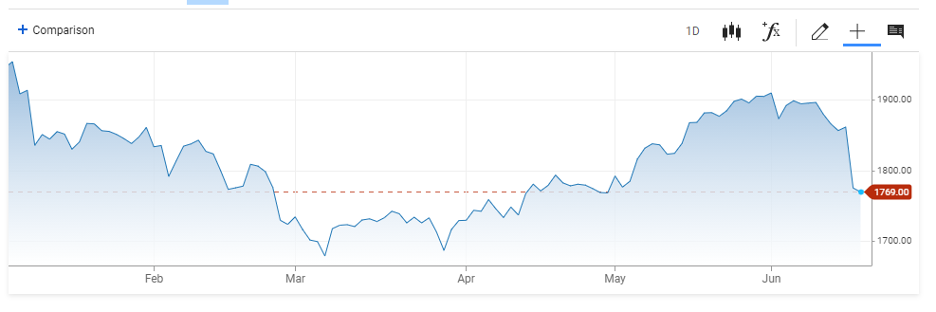
Source: CNBC
West Texas Intermediate Crude futures for July 2021 delivery traded at $71.50 a barrel on Friday, up 0.46%. Oil continues to rise, hitting a pandemic high, as the global economy recovers from the pandemic.
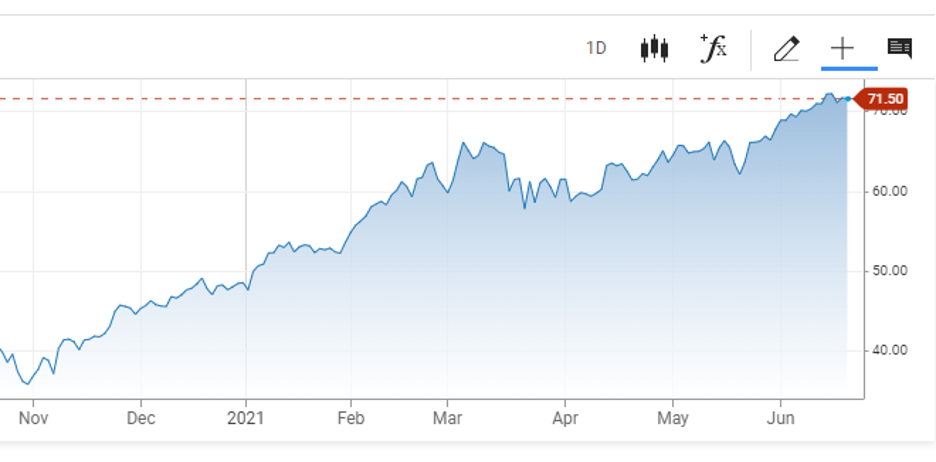
Source: CNBC
The CBOE Volatility Index (aka the “VIX”), a measure of market volatility and investor sentiment, rose last week, but remains muted and well below the levels which would suggest looming market turmoil.
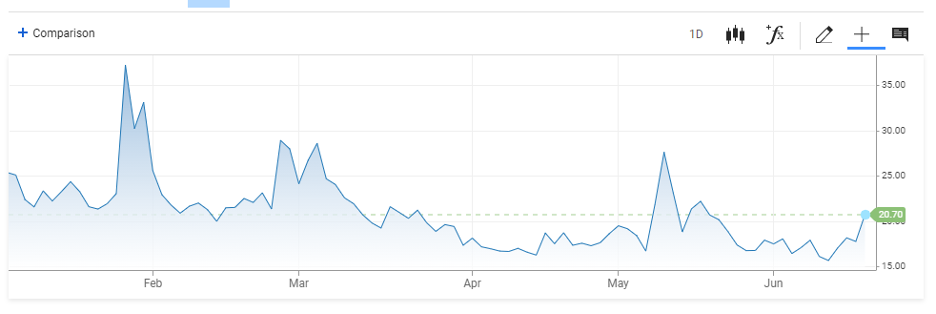
Source: CNBC
Lumber prices dopped 15% last week, suggesting that supply constraints are easing, and that new home construction and home remodel projects are leveling off. Future for July delivery of lumber were down 41% from the record reached in early May.
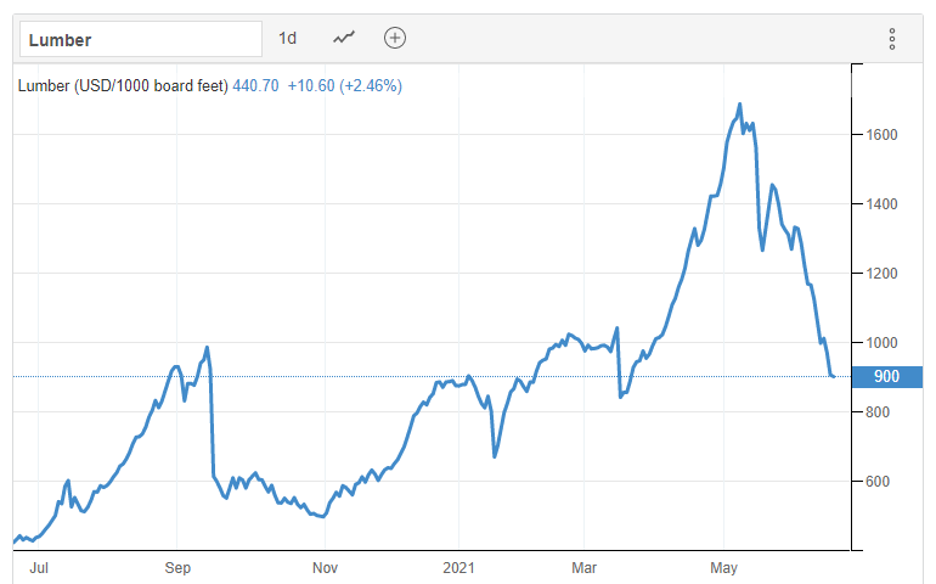
Source: Trading Economics
Producer Prices
The Labor Department reported that the producer price index for final demand (“PPI”) increased 0.8% in May from its April level. Excluding food and energy, the index rose 0.7%. The PPI tracks changes in production costs. An increase in demand, shortages, rising labor costs and shipping delays have driven prices upward. The annual increase in the PPI was in 6.6% in May, the largest increase since 2010.
Retail Sales
The Commerce Department reported that consumer spending slowed in May. Consumers spent 1.3% less in May, cutting back on autos, furniture, electronics, and building materials, among other items. Americans are spending more on services, including at restaurants, bars, casinos, theme parks, indoor entertainment venues and gyms.
10-Year Treasury Note
Friday the yield on the 10-year Treasury Note was 1.443%. Yields have declined over the past five weeks.
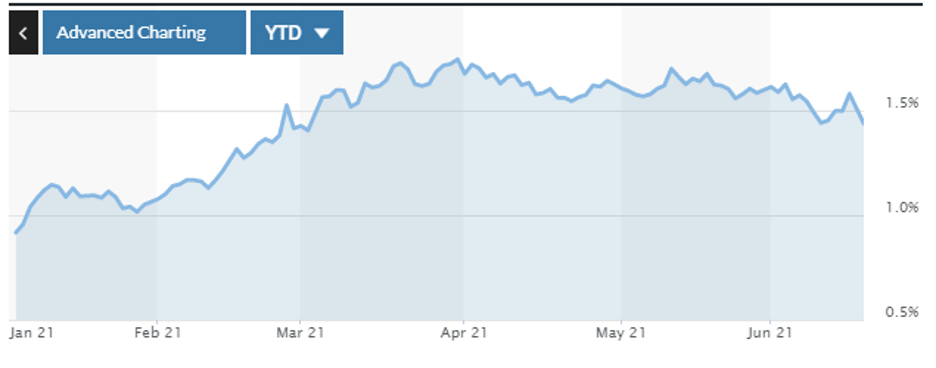
Source: MarketWatch
COVID-19 – The Numbers
Globally, across 213 countries and territories, there have been over 178 million confirmed cases and over 3.8 million deaths. In the United States, over 33 million have been infected and over 601,000 have died.
Infections
The number of new cases is now at the lowest point since the beginning of the pandemic. The positive test rate is 2%, according to Johns Hopkins University. The rate was 13% this past winter.
The seven-day average of daily new cases in the U.S. was just over 13,800 according to the Center for Disease Control and Prevention (CDC).
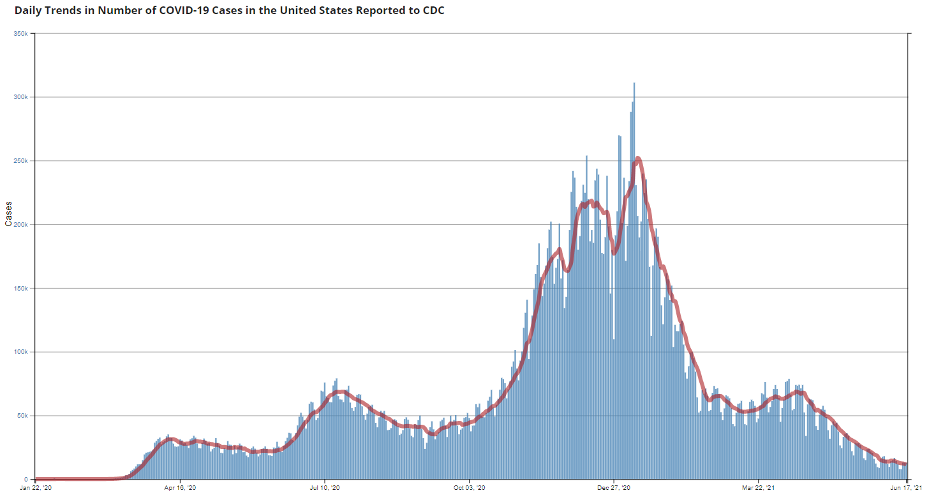
Source: CDC
Deaths
Despite losing over 600,00 lives to the virus, the average number of daily deaths in the US has fallen to the lowest point since March of 2020. On June 10, the CDC reported that the average number of deaths was 352.
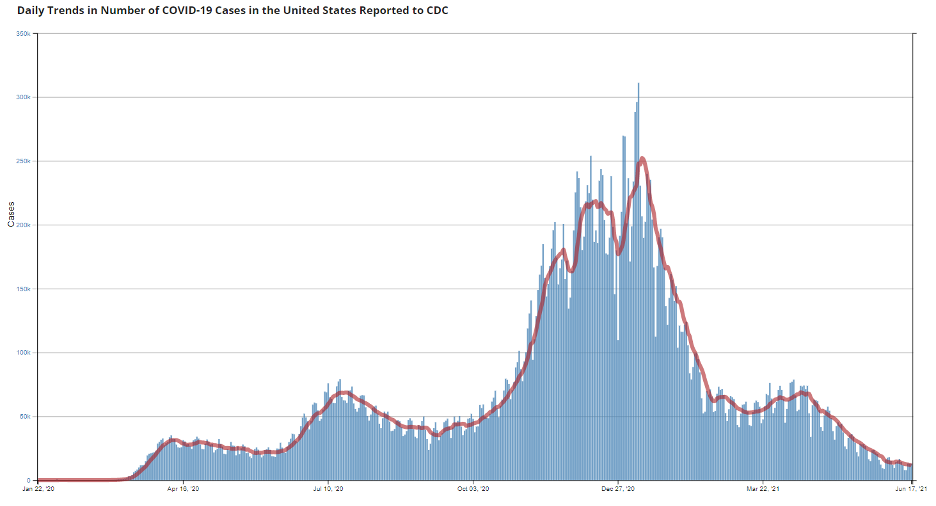
Source: CDC
Vaccinations
The rate of vaccinations has slowed, and it is not clear if/when the nation overall and many states will reach their vaccination goals.
The CDC reported that over 43% of the US population is fully vaccinated. President Biden reported that 300 million vaccine shots have been administered to Americans in the first 150 days of his administration. His goal is to have 70% of adult receive at least one dose by July 4. Given that approximately 65% of adults have received at least one dost of the vaccine, the President’s goal may not be reached. The highest rates of vaccination are among people over 65 who are the most vulnerable to the virus.
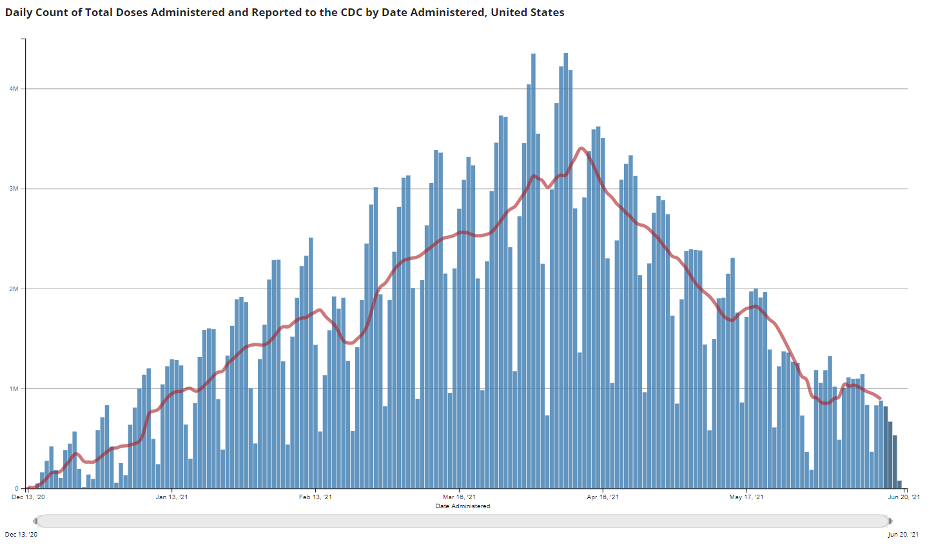
Source: CDC
The decline in vaccinations is troubling. The nation has not reached herd immunity and the Delta variant poses a threat, particularly to those who are not vaccinated. The variant, which was first identified in India, is significantly more transmissible and more severe than the earlier versions of the virus.
The Labor Market
The Labor Department reported that worker claims for first time unemployment benefits increased last week. This is the first increase since April. Claims rose by 37,000 to 412,000 in the week ending June 12. The uptick is likely an aberration in an otherwise recovering labor market.
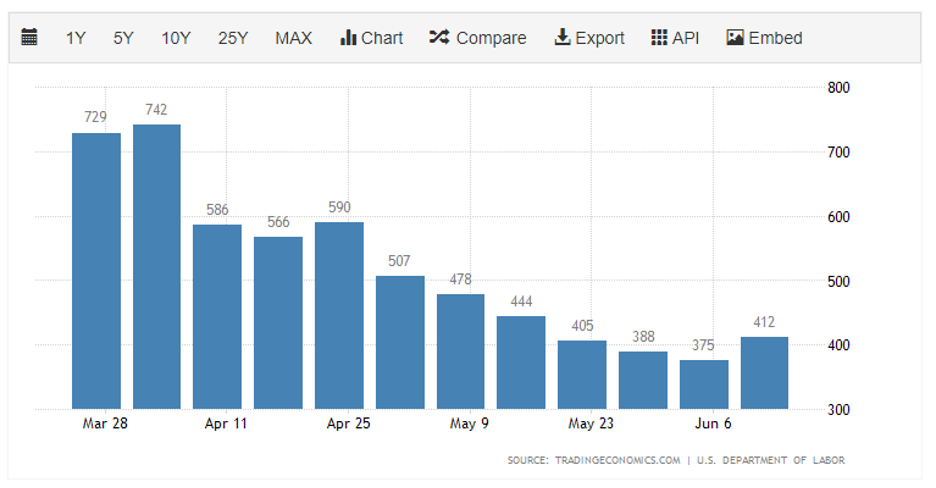
Source: Trading Economics
The number of workers receiving ongoing unemployment benefits fell by more than 500,000 to 14.8 million for the week ending May 29.
Employers added 837,000 jobs in April and May. Yet, there were 7.6 million fewer jobs in May than before the pandemic. The unemployment rate in May was 5.8%.
US workers are quitting their jobs at the highest rate in over 20 years. The Labor Department reported that the share of the US labor force that quit was 2.7%, an increase from 1.6% a year earlier. The report suggests that workers are confident in their ability to leave their current jobs. Some want a better job. Some want a more flexible work schedule. Some are leaving temporarily due to stress and burnout. Some (an estimated 2.6 million between February 2020 and April of this year) are leaving the work force permanently and retiring. While this is viewed by many economists as a sign of a healthy economy, it also portends rising wages as employers attempt to retain their workers. It also creates uncertainty for the Fed as it seeks to realize its goals for full employment.
So, the labor market is muddled and will remain so as states end enhanced unemployment benefits, employers compete for labor and workers make decisions about returning to work.
Infrastructure Package
There has been a lot of discussion in Washington about an infrastructure package. However, a deal remains elusive. President Biden would like a bipartisan agreement and discussions continue.
Looking Forward
As we enter the summer months, we will be closely watching economic data, looking for signs that inflation remains contained. The biggest threat to the economy at this point is not the virus, but rather a spike in inflation that would force the Federal Reserve to withdraw monetary support and raise interest rates.
We remain available to support you in any way we can.
Keep the faith, be safe, and stay healthy.
PLEASE SEE important disclosure information at www.springwaterwealth.com/blog-disclosure/.
